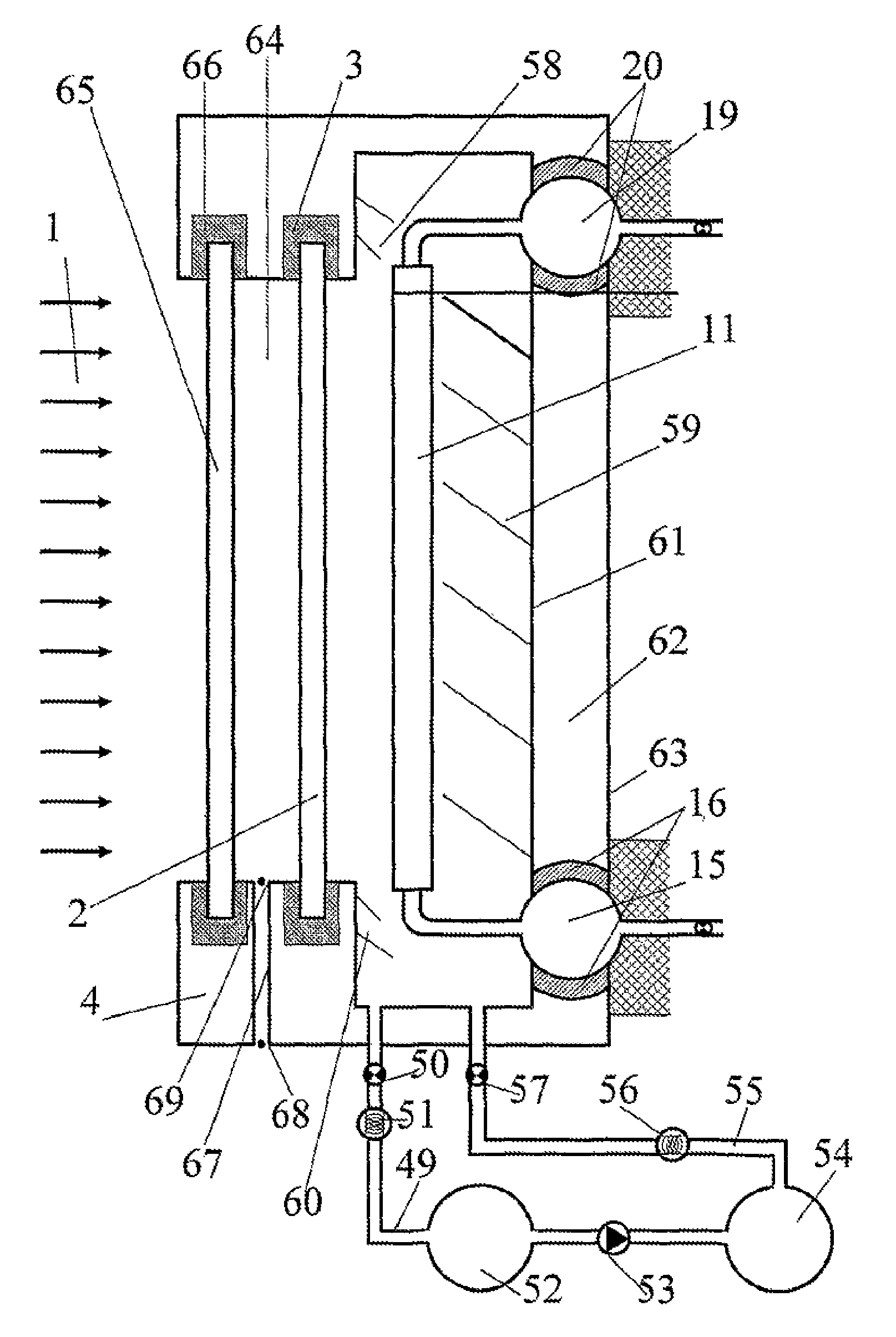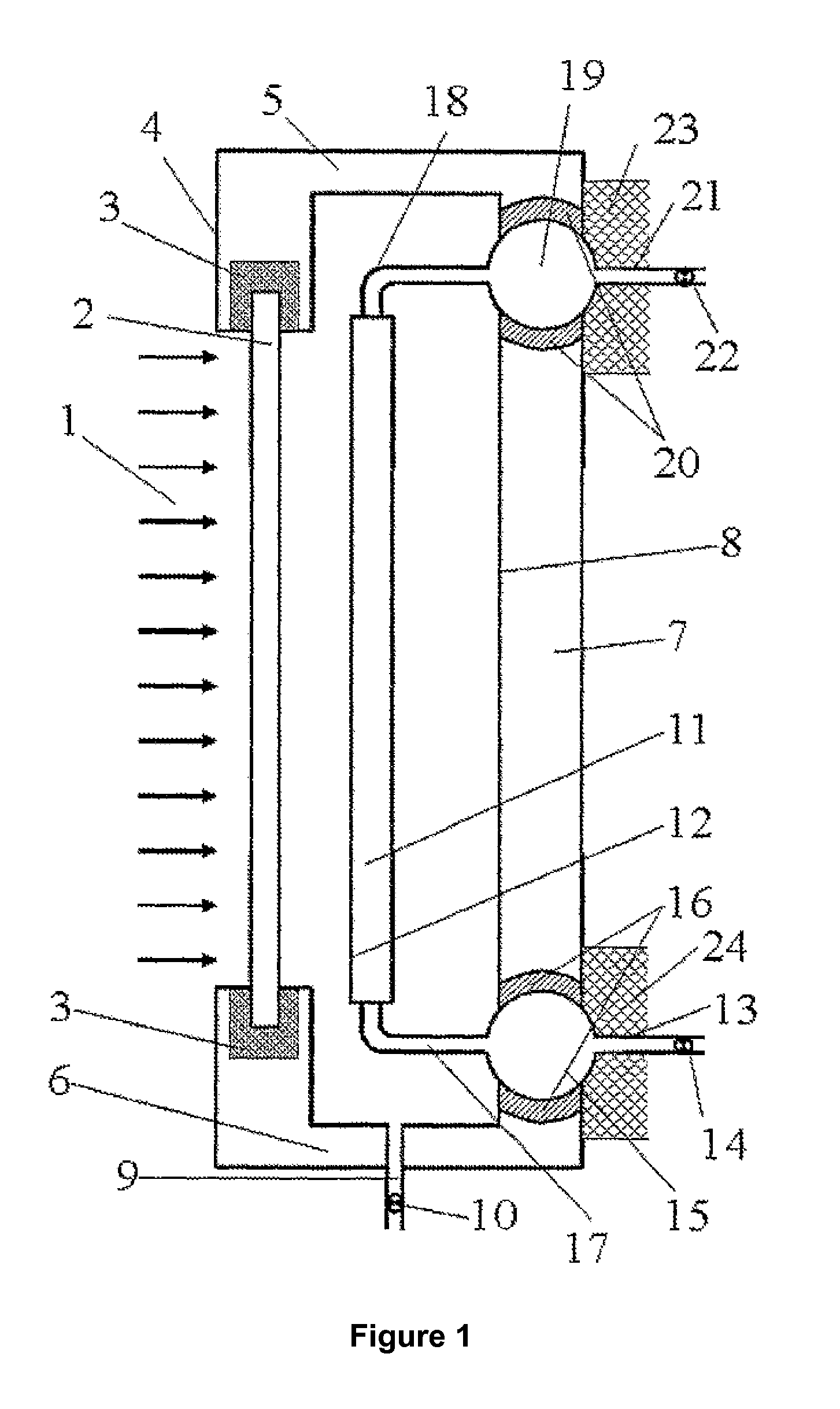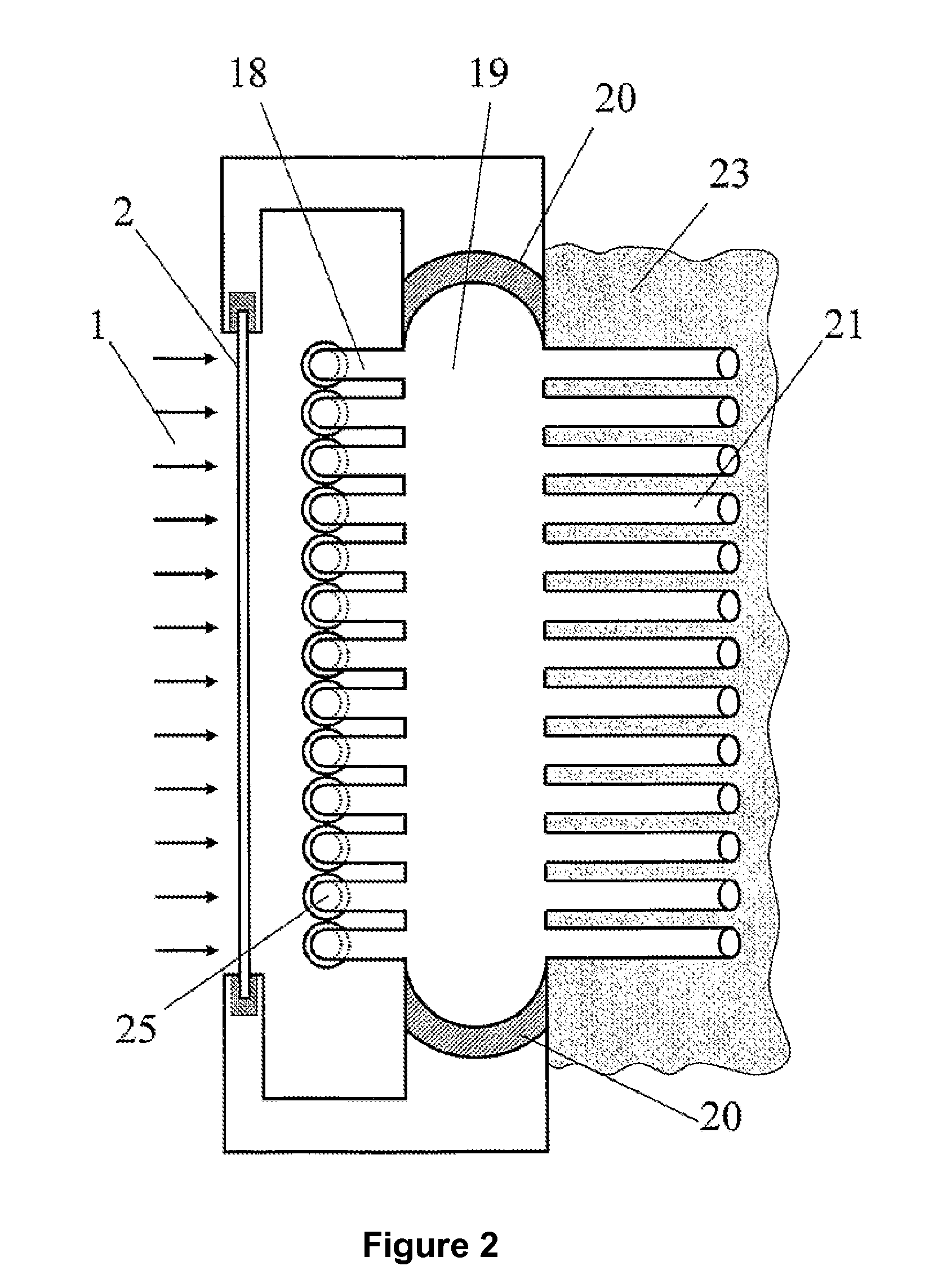Thermal solar energy collector
a solar energy collector and solar energy technology, applied in the field of thermal solar energy, can solve the problems of air quickly oxidizing the external surface of air, reducing the effective collection of heat, and transferring to the heat-conducting fluid, and achieve the effect of easy assimilation of expansion
- Summary
- Abstract
- Description
- Claims
- Application Information
AI Technical Summary
Benefits of technology
Problems solved by technology
Method used
Image
Examples
Embodiment Construction
[0159]FIG. 1 represents a cross-sectional view of the general configuration of the proposed invention, showing the radiation striking the collector, 1, which may be direct from the sun, though in general it will come from several mirrors which concentrate it on the collector, to achieve higher temperatures, as the received intensity is larger, in power per surface unit, that is, watts per square meter. The radiation will mainly cross the transparent cover 2, which is embedded, through a seal 3 in the front wall 4 of the box 100 of the collector. This box 100 is airtight, as it is closed by the aforementioned front part, comprising that said wall plus the cover 2, as well as the upper walls, 5, and lower walls, 6, plus the side walls, without any especial function to mention, plus the rear wall, 7, which is not continuous rather it has bores where the heat-conducting fluid inlet tanks, 15, and outlet tanks, 19 rest; though the assembly is airtight due to the seals of the inlet tank, ...
PUM
 Login to View More
Login to View More Abstract
Description
Claims
Application Information
 Login to View More
Login to View More - R&D
- Intellectual Property
- Life Sciences
- Materials
- Tech Scout
- Unparalleled Data Quality
- Higher Quality Content
- 60% Fewer Hallucinations
Browse by: Latest US Patents, China's latest patents, Technical Efficacy Thesaurus, Application Domain, Technology Topic, Popular Technical Reports.
© 2025 PatSnap. All rights reserved.Legal|Privacy policy|Modern Slavery Act Transparency Statement|Sitemap|About US| Contact US: help@patsnap.com



